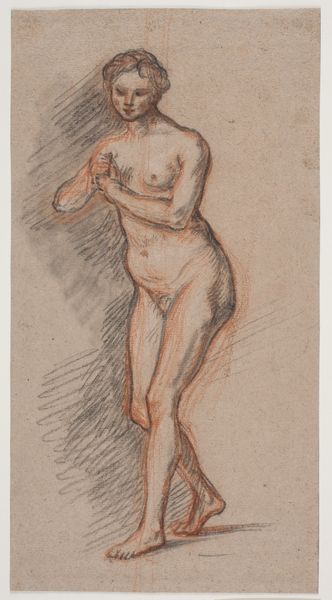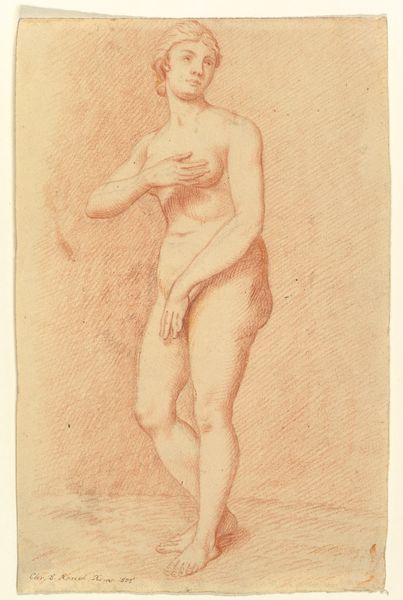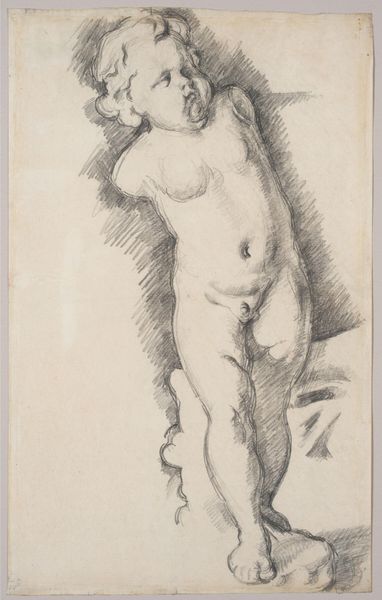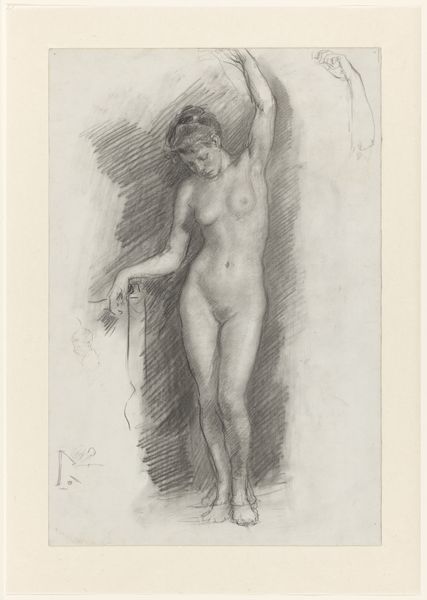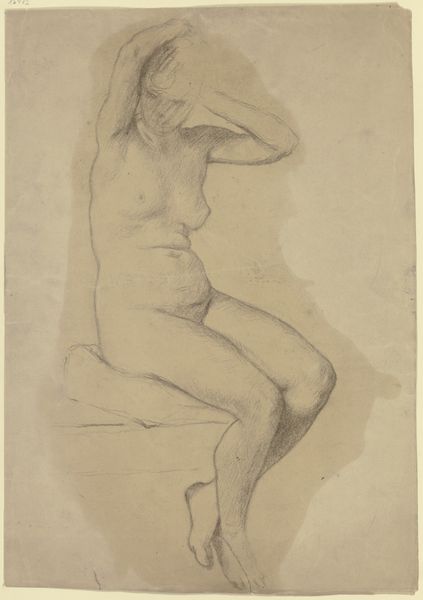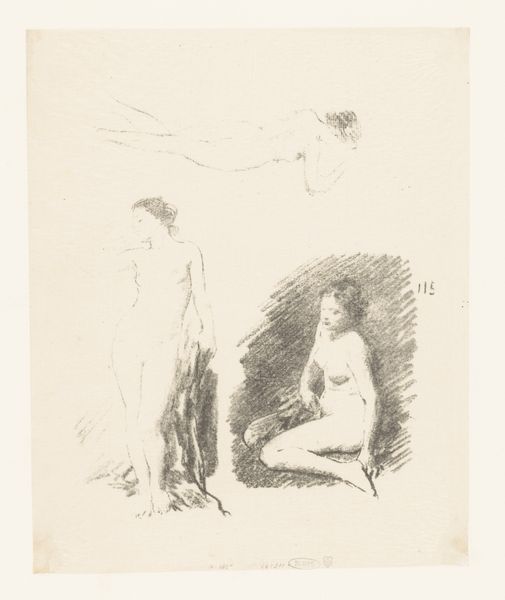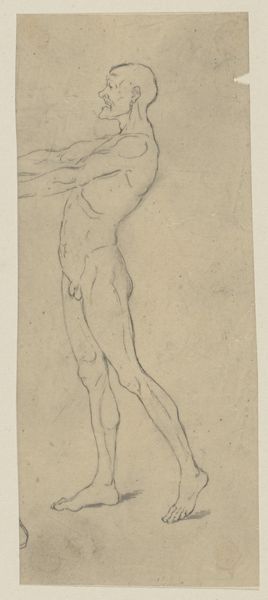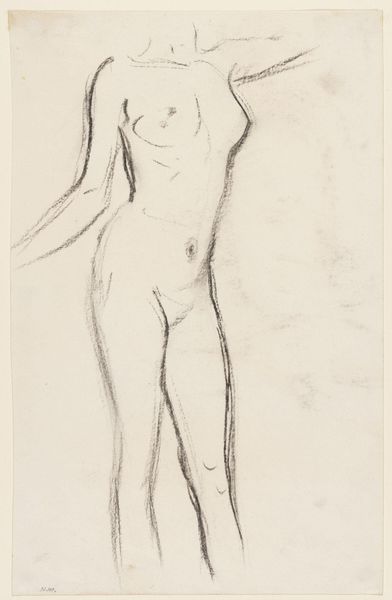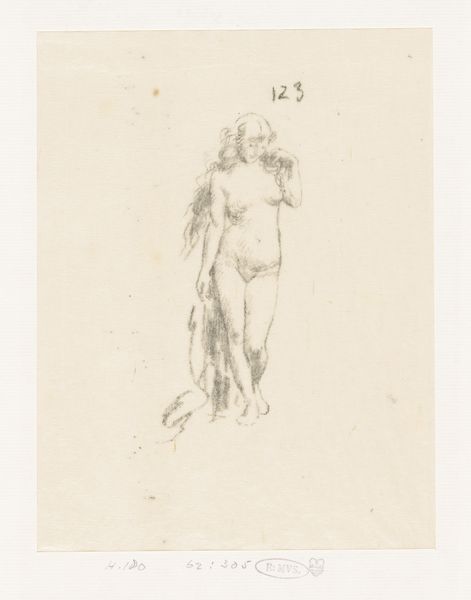
drawing, pencil
#
portrait
#
drawing
#
pencil sketch
#
figuration
#
pencil
#
academic-art
#
nude
#
realism
Dimensions: height 245 mm, width 150 mm
Copyright: Rijks Museum: Open Domain
Editor: Here we have Henri Fantin-Latour’s "Studie van een staande naakte vrouw," a pencil drawing dating from 1903-1904. It’s striking how he's captured the figure so economically with what looks like, literally, the most minimal of materials. What strikes you about this drawing? Curator: It's compelling how the drawing reveals the means of production. We see the labor—the artist's hand meticulously building form with simple graphite. Fantin-Latour challenges the traditional academic nude by emphasizing the materiality of its creation. Editor: Challenging how? I guess I see it as quite traditional. Curator: In its apparent simplicity! Notice the starkness. The support – just paper. Pencil marks barely there. It makes us aware of the choices, the conscious decision to reveal rather than conceal the process. Does it strike you as a study? If so, what are we to make of it, given that it has entered the collection? Is it about the artist's work or about representing women's labour? Editor: It's true, focusing on the *making* rather than just the made gives the artwork more nuance. So we aren't just seeing the figure, but *also* considering how it came into existence, and therefore also perhaps considering what the nude actually *is* culturally... Curator: Precisely. Think about the societal conditions influencing this: the availability of materials, the artist's labor in a studio context, even the role of academies. It compels us to reflect on the economic and social forces that shape both art and perception. Editor: It almost seems radical, highlighting the material rather than obscuring it in illusion. I like the focus on not only the image itself, but how its production is inherently political, especially with figuration! Curator: Absolutely. Seeing art through a materialist lens lets us excavate those often-unseen power dynamics and really reconsider the value we assign to artistic labor.
Comments
No comments
Be the first to comment and join the conversation on the ultimate creative platform.
